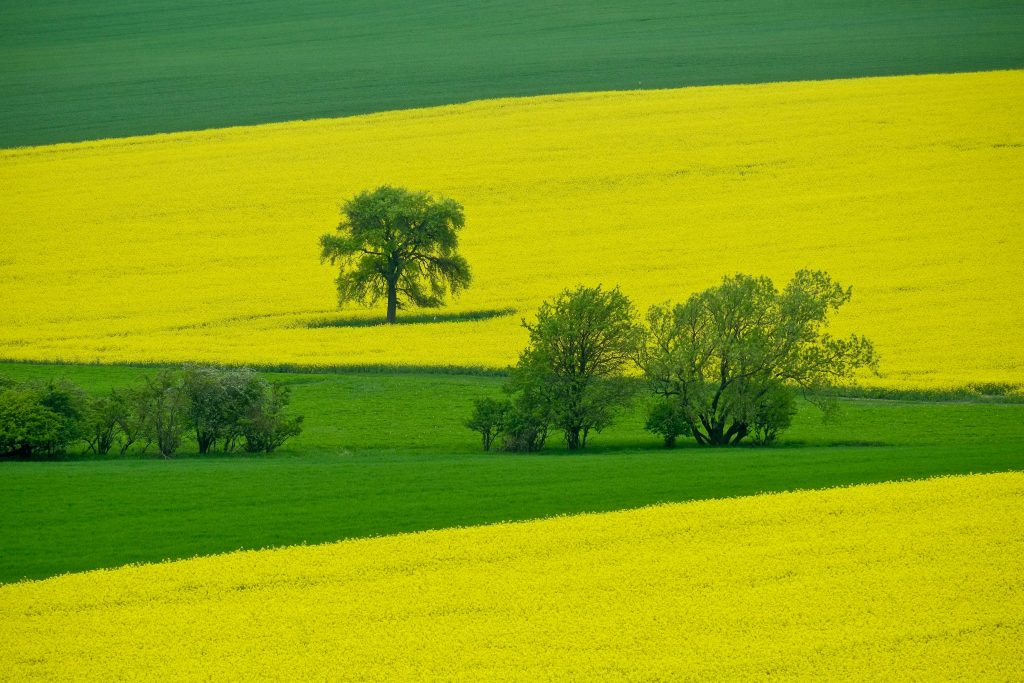Oil seed rape adds a bright yellow splash to the countryside but it can be a nuisance in the hive. Why?
For the bee keeper there is a lot of oil seed rape planted. In fact in the UK we had approximately 600,000 hectares in 2018 and that represents almost 6.5% of the total agricultural land in the UK. It is not surprising that we tend to notice it when there is so much of it and it makes it presence very visible - not just to us but also to the bees.

For the bees
- The field of rape seed presents a vast amount of pollen and nectar more than they could possibly want
- So much nect and pollen means they can store a lot and therefore rapidly outgrow the hive and be encouraged to swarm
- When the flowers have gone they have to look for an alternative source of food
- The alternative has to be able to supply a hive which has grown in a time of plenty.
- The honey will not cystalise unless the temperature in hive drops below 30C or so.
For the consumer
- The honey is a buff colour
- It sets rapidly to a firm but spreadable consistency
- The texture varies from smooth and creamy to slightly granular
- The taste is very pleasant - possibly a slight peppery after taste
- It is sometimes sold as "Canola " honey. Canola is from the words Canada oil low acidity. Useful to know if you are using Google.
- To make it into runny honey heat it to 38C. This can take a long time as you want it all to reach 38C and no more. You cannot blast it in the microwave and then stir it in for several minutes and hope that works.
For the bee keeper
- The bees may outgrow the hive and swarm precautions need to be taken.
- The honey can set in the cells very quickly, especially if the temperature drops.
- It sets quickly so has to be extracted promptly - as soon as it does not drip out of the cells. Usually within 24 hours of leaving the hive!
- It crystalises quickly due to the high proportion of glucose in the sugars.
- Once it starts to crystalise then those crystals act as seeds for further crystalisation so it gets faster as more cystalises.
- See what is growing in your area with this map.

